THE BHGAVATA PURA
THE BHGAVATA PURA
Sacred Text and Living Tradition
Edited by
Ravi M. Gupta and Kenneth R. Valpey
COLUMBIA UNIVERSITY PRESS
New York
Columbia University Press
Publishers Since 1893
New York Chichester, West Sussex
cup.columbia.edu
Copyright 2013 Columbia University Press
All rights reserved
E-ISBN 978-0-231-53147-4
Library of Congress Cataloging-in-Publication Data
The Bhagavata Purana : sacred text and living tradition / edited by Ravi M. Gupta and Kenneth R. Valpey.
pages cm
Includes bibliographical references and index.
ISBN 978-0-231-14998-3 (cloth : alk. paper)ISBN 978-0-231-14999-0 (pbk.)ISBN 978-0-231-53147-4 (electronic)
1. Puranas. BhagavatapuranaCriticism, interpretation, etc. I. Gupta, Ravi M. (Ravi Mohan), 1982 II. Valpey, Kenneth Russell, 1950
BL1140.4.B436B455 2013
294.5'925dc23
2012014609
A Columbia University Press E-book.
CUP would be pleased to hear about your reading experience with this e-book at .
Jacket: A sdhu narrates Krishna-Kath to villagers near Nandagaon, Vraja-Vrindavan. Photo by and courtesy of Filip Cargonja.
References to Internet Web sites (URLs) were accurate at the time of writing. Neither the author nor Columbia University Press is responsible for URLs that may have expired or changed since the manuscript was prepared.
TO OUR TEACHERS
tva na sandarito dhtr dustara nistitratm
kali sattva-hara pus kara-dhra ivravam
By providence
we have met you,
who are like a ships captain!
The ocean that is this age,
ruinous for humankind,
is difficult to navigate
for those who would cross it.
Bhgavata Pura 1.1.22
CONTENTS
The Bhgavata Pura is one of the most beloved and versatile Hindu sacred texts. This work of over fourteen thousand Sanskrit verses resists easy categorization into any genre of Sanskrit literature, for it stands out among the Puras in more ways than one. The narrative structure of the Bhgavata holds it together tightly as a coherent literary work. Its language and poetical expression are on par with the best of Sanskrit poetry (kvya). The theological message of the Pura is consistently focused on devotion to Krishna, or Vishnu. And the philosophical content of the text is well developed and grounded solidly in the classical traditions of Vednta and Skhya. Moreover, the Bhgavata Pura is unique among the Puras in the amount of Sanskrit commentarial attention it has received over the centuries.
The Bhgavatas prominence and versatility, however, go beyond the written word. The text has permeated popular Hindu traditions, both in India and in diaspora communities, through its use in liturgy, ritual recitation, temple architecture, the fine arts, and film. The text forms the foundation for the religious practice of several major north Indian devotional (bhakti) traditions, as well as schools of dance and drama.
Considering the Bhgavatas ubiquitous presence in Hindu traditions, resources for its study are surprisingly few and far between. Most studies that are available today focus only on the tenth book of the text, ignoring the remaining eleven books. The purpose of this volume is to offer a well-rounded and multifaceted view of the Bhgavata for scholars and students of Hinduism, serving to introduce the text for those unfamiliar with it and to present original scholarship from both seasoned and emerging scholars.
As we consider the modest limits of this book in relation to the great need and potential for scholarship on the Bhgavata Pura, we are reminded of a verse voiced by Sta when addressing the Naimiraya sages: Good friends! Questioned by you, I will narrate the Bhgavata to the extent of my own understanding. As birds soar in the sky as far as they are able, so the wise traverse along the path to Vishnu (1.18.23).
We hope this volume will serve as a catalyst for further Bhgavata studies. One such project is already in the wings, namely, the Bhgavata Pura Research Project of the Oxford Centre for Hindu Studies, based in Oxford, U.K. We are confident that this and similar efforts will open up an important dimension in understanding Indic culture in all its diversity.
Writing is often imagined as a solitary exercise, but it is rarely so. This book, in particular, was a collaborative enterprise from the beginning. We found that writing together made us more creative, careful, and cheerful. It was also a lot of fun. We enjoyed working with our contributors, and we are grateful for the patience they showed as this volume found its present shape.
We would like to thank the institutions that have provided us with facility and fellowshipthe Oxford Centre for Hindu Studies, the Department of Cultural and Religious Studies at the Chinese University of Hong Kong, the Religion Program at Centre College, and the Department of Religious Studies at the College of William and Mary. We would also like to thank the College of William and Mary for providing financial support in the form of summer research grants.
Professor Graham Schweig and many others inspired, encouraged, and guided us from the early stages of the project. The Gupta family gave us a writing sanctuary for two summers of collaborative work in Boise, Idaho. Diana and Prentiss Alter, Arjuna Krishna-Das, Pierpaolo Marras, and Param P. Tomanec provided valuable technical assistance. We are grateful to all of them.
In keeping with standard South Asian scholarship, we follow the established system of diacritics for Sanskrit transliteration. Exceptions to this are proper names commonly seen in English usage. To pronounce Sanskrit words, the most important elements to keep in mind are as follows:
c is pronounced much like ch in chat.
and are pronounced much like sh in ship.
Vowels with a macron are pronounced twice as longfor example, should be pronounced like the a in father.

The world knows Hinduism as the religion of the Vedas, the ancient hymns used for sacrificial ritual; or as the wisdom of seers recorded in the Upaniads some two millennia ago; or indeed as the poetry of the Bhagavad Gt, Krishnas teachings on duty and devotion to the disheartened warrior Arjuna. No doubt these texts are widely revered by Hindus as the philosophical foundations of their tradition. And yet what Hindus know intimately, perform repeatedly, and teach their children are texts of a very different sortthe epic story of the Rmyaa and the ancient lore of the Puras.
Pura is a genre of sacred literature that began as oral histories recited by bards in public assemblies, even as they are recited today. At nearly four hundred thousand verses in Sanskrit, the bulk of the material found therein reached stable form during the reign of the Guptas in the fourth and fifth centuries C.E., although dating particular Puras has been difficult. There are eighteen major Puras, and together they form the source material for much Hindu belief and practice.

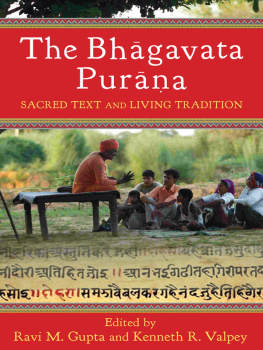
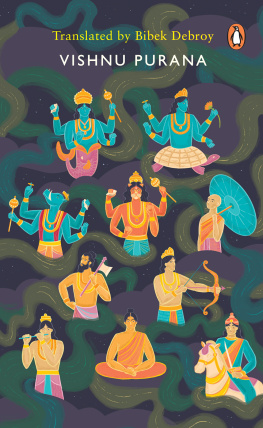
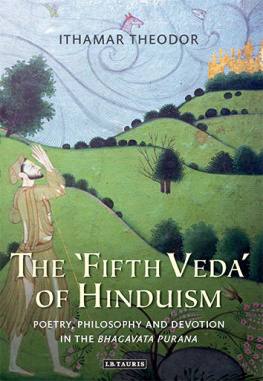
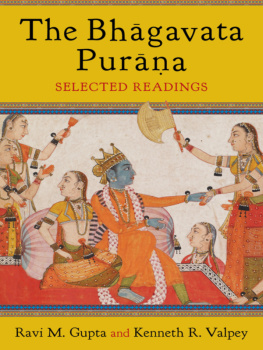


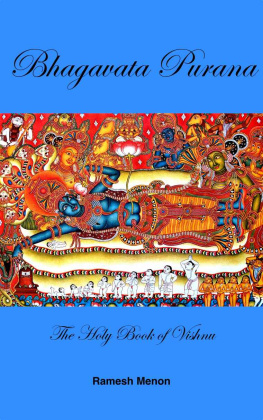
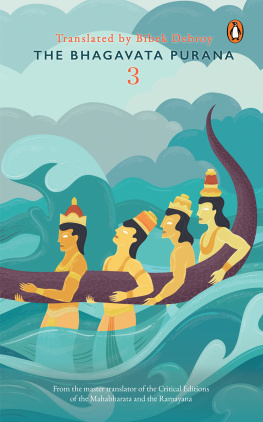
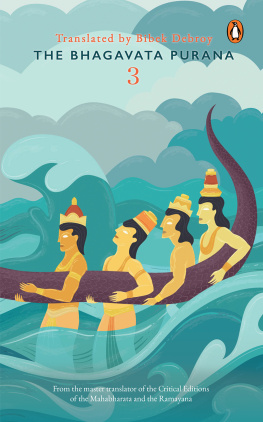
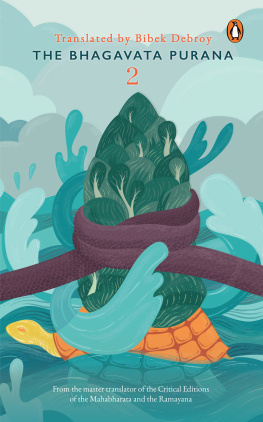
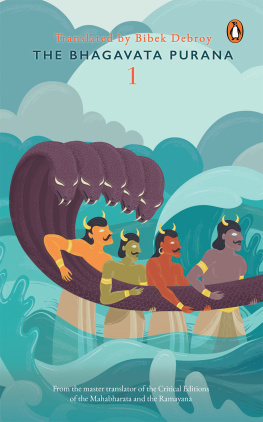

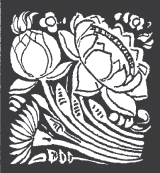


 The world knows Hinduism as the religion of the Vedas, the ancient hymns used for sacrificial ritual; or as the wisdom of seers recorded in the Upaniads some two millennia ago; or indeed as the poetry of the Bhagavad Gt, Krishnas teachings on duty and devotion to the disheartened warrior Arjuna. No doubt these texts are widely revered by Hindus as the philosophical foundations of their tradition. And yet what Hindus know intimately, perform repeatedly, and teach their children are texts of a very different sortthe epic story of the Rmyaa and the ancient lore of the Puras.
The world knows Hinduism as the religion of the Vedas, the ancient hymns used for sacrificial ritual; or as the wisdom of seers recorded in the Upaniads some two millennia ago; or indeed as the poetry of the Bhagavad Gt, Krishnas teachings on duty and devotion to the disheartened warrior Arjuna. No doubt these texts are widely revered by Hindus as the philosophical foundations of their tradition. And yet what Hindus know intimately, perform repeatedly, and teach their children are texts of a very different sortthe epic story of the Rmyaa and the ancient lore of the Puras.